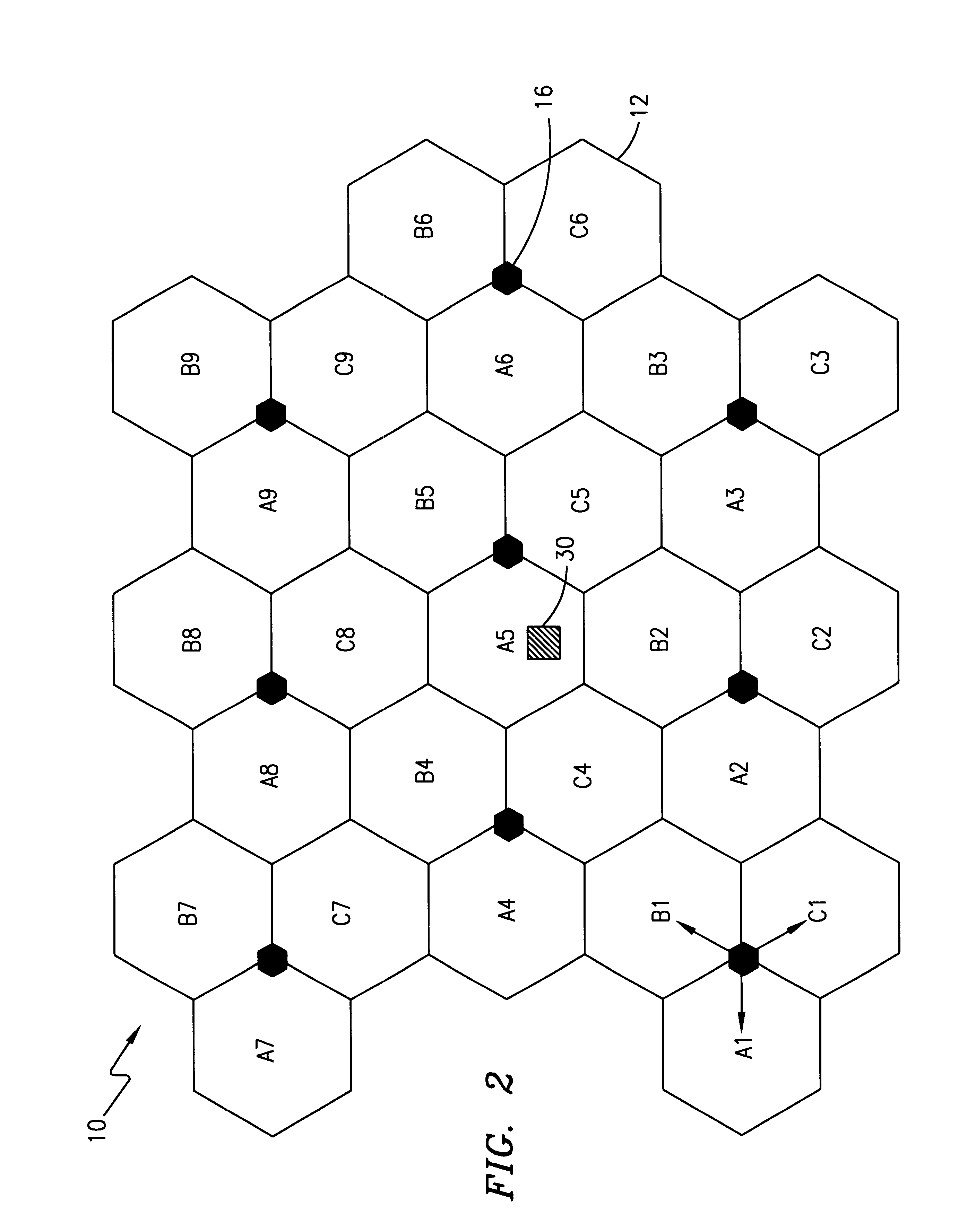Method and system for autonomously allocating frequencies to a radio system sharing frequencies with an overlapping macro radio system
a radio system and macro technology, applied in the field of private radio communication systems, can solve the problems of increasing planning difficulty, affecting the frequency allocation of radio systems, and limited amount of users, so as to avoid co-channel interference, maximize radio spectrum usage, and maximize radio spectrum usage
- Summary
- Abstract
- Description
- Claims
- Application Information
AI Technical Summary
Benefits of technology
Problems solved by technology
Method used
Image
Examples
Embodiment Construction
The present invention will now be described more fully hereinafter with reference to the accompanying drawings, in which preferred embodiments of the invention are shown. This invention may, however, be embodied in many different forms and should not be construed as limited to the embodiments set forth herein; rather, these embodiments are provided so that this disclosure will be thorough and complete, and will fully convey the scope of the invention to those skilled in the art.
Today's public cellular networks deploy frequency reuse in order to make optimal usage of the radio spectrum. Frequency reuse guarantees that a frequency used in one cell is not reused in a cell nearby but only in cells at a certain distance away. The propagation loss the interfering signal experiences is preferably sufficiently large such that the carrier-to-interference ratio in the considered cell is high enough for acceptable radio operation to occur therein. Frequency reuse provides the capability to cov...
PUM
 Login to View More
Login to View More Abstract
Description
Claims
Application Information
 Login to View More
Login to View More - R&D
- Intellectual Property
- Life Sciences
- Materials
- Tech Scout
- Unparalleled Data Quality
- Higher Quality Content
- 60% Fewer Hallucinations
Browse by: Latest US Patents, China's latest patents, Technical Efficacy Thesaurus, Application Domain, Technology Topic, Popular Technical Reports.
© 2025 PatSnap. All rights reserved.Legal|Privacy policy|Modern Slavery Act Transparency Statement|Sitemap|About US| Contact US: help@patsnap.com



